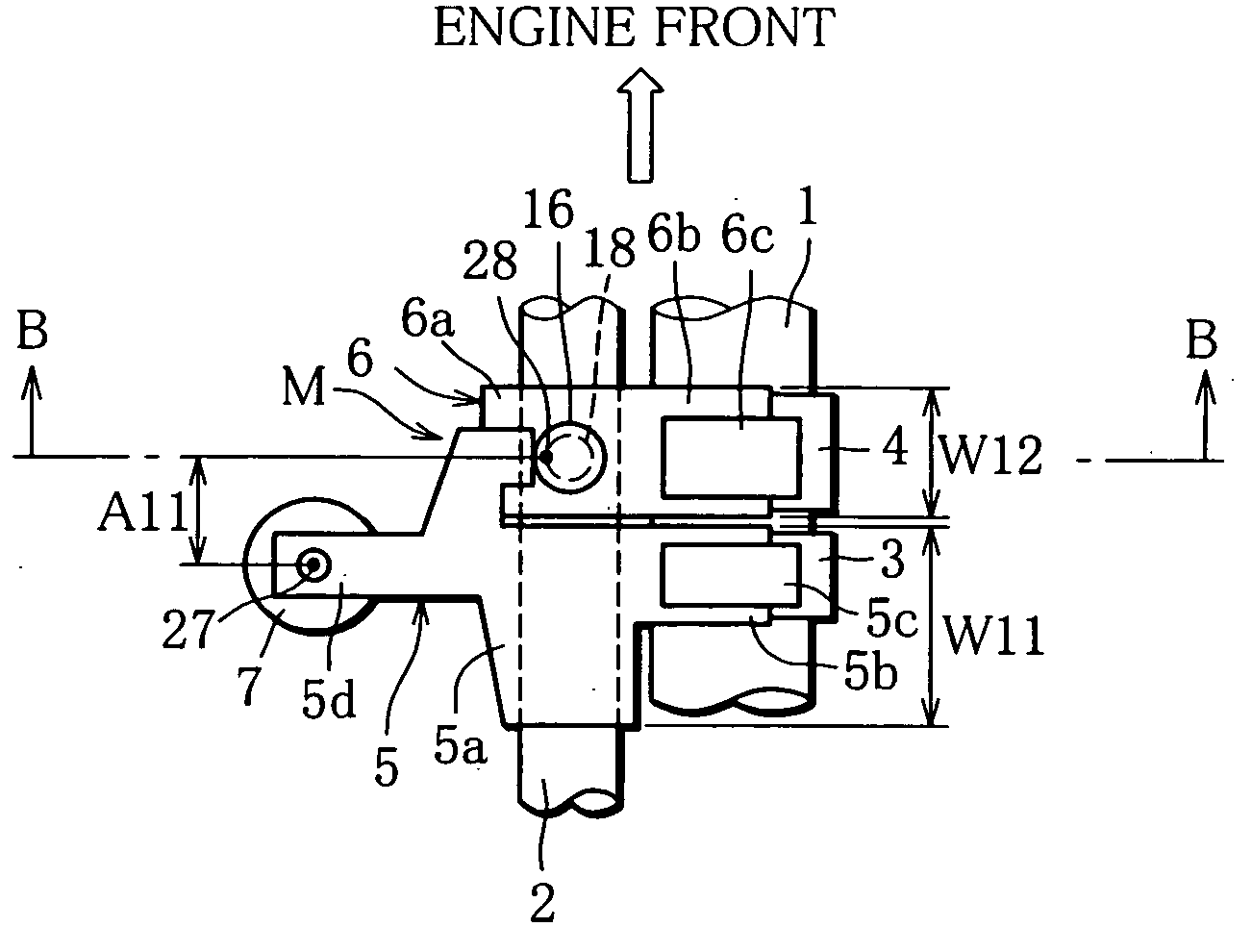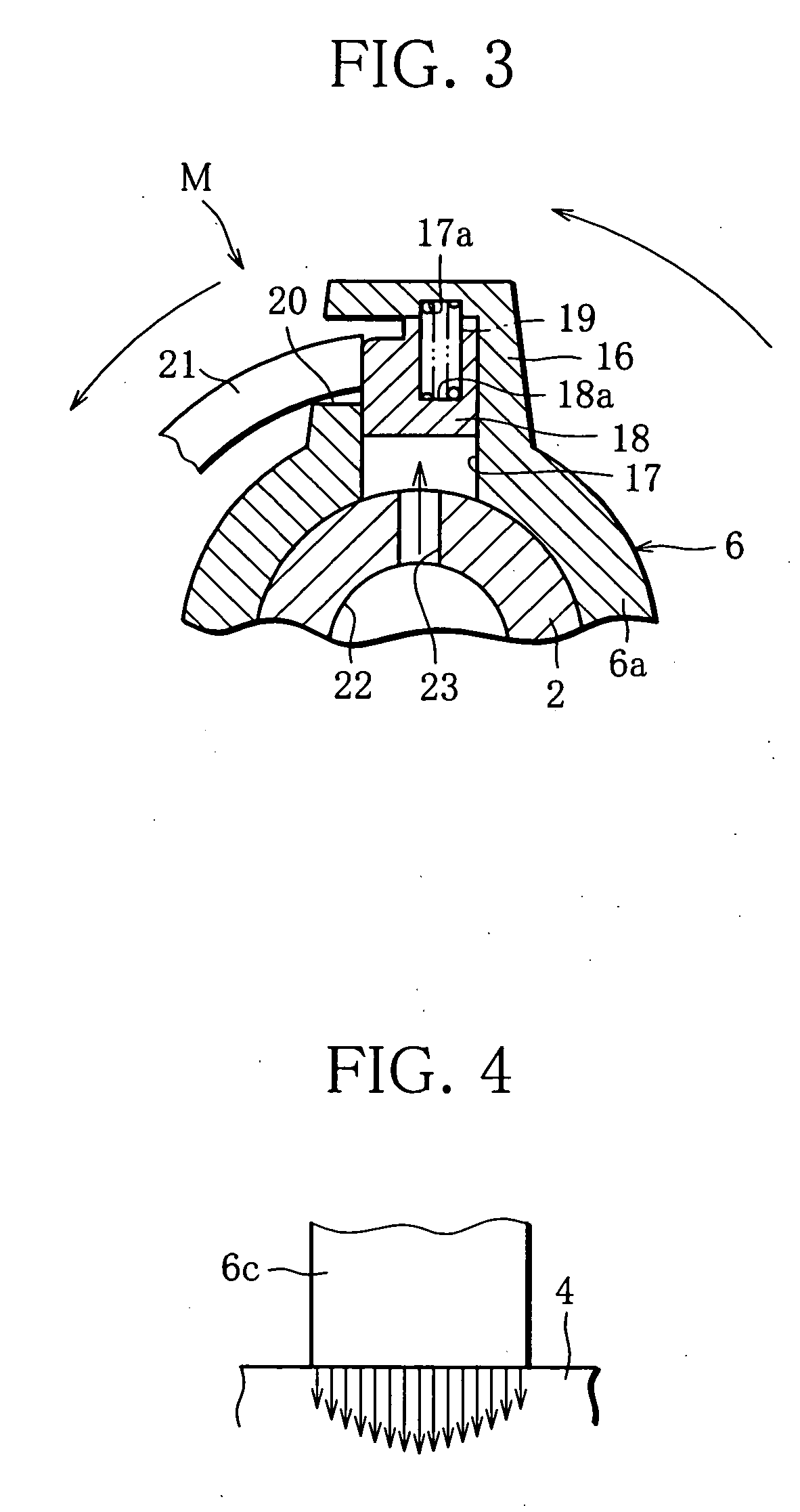Variable valve train apparatus for an internal combustion engine
a technology of variable valve train and internal combustion engine, which is applied in mechanical equipment, valve arrangements, machines/engines, etc., can solve the problems of reducing the durability and reliability of the variable valve train apparatus, and affecting the operation of the valve train. , to achieve the effect of reducing the endurance avoiding deviating wear of the operating portion, and increasing the width of the operating portion
- Summary
- Abstract
- Description
- Claims
- Application Information
AI Technical Summary
Benefits of technology
Problems solved by technology
Method used
Image
Examples
first embodiment
[0065] In the following, a variable valve train apparatus of an engine that embodies this invention will be explained.
[0066] The engine of this embodiment is constituted as an in-line four-cylinder SOHC gasoline engine with two valves per cylinder, and is designed to operate in the operation mode that can be changed over between a low-speed mode to provide an output characteristic suited to an ordinary speed region and a high-speed mode to provide an output characteristic particularly suited to a high speed region. To this end, a valve driving apparatus for each cylinder is provided at its intake side with a changeover mechanism for mode changeover. In the following, the construction of the valve driving apparatus for a particular cylinder will be explained. The other cylinders have the same construction as the particular cylinder.
[0067]FIG. 1 is a plan view showing an intake-side part of the variable valve train apparatus according to this embodiment which corresponds to one cylin...
second embodiment
[0083] In the following, a variable valve train apparatus of an engine that embodies this invention will be explained.
[0084] As with the engine according to the first embodiment, the engine of this embodiment is constructed as an in-line four-cylinder SOHC gasoline engine having two valves per cylinder, and is designed to operate in the operation mode which is switchable between a low-speed mode to provide an output characteristic suited to an ordinary rotation zone and a high-speed mode to provide an output characteristic particularly suited to a high-speed rotation zone. To this end, a changeover mechanism for mode switching is provided on the intake side of the variable valve train apparatus for each cylinder. In the following, the construction of the valve driving apparatus for a particular cylinder will be explained, but other cylinders are the same in construction as the particular cylinder. The construction of the changeover mechanism M is the same as that explained in the fi...
third embodiment
[0092] The following is an explanation of a third embodiment in which this invention is embodied in a different variable valve train apparatus for an engine.
[0093] The engine of this invention is constructed in the form of an in-line four-valve SOHC gasoline engine with two valves per cylinder as in the engine of the first embodiment, and is designed to operate in the operation mode which can be changed between a low-speed mode to provide an output characteristic suited to an ordinary rotation zone and a high-speed mode to provide an output characteristic particularly suited to a high-speed rotation zone. To this end, a changeover mechanism for mode switching is provided on the intake side of the variable valve train apparatus for each cylinder. In the following, the construction of the valve driving apparatus for a particular cylinder will be explained, but other cylinders are the same in construction as the particular cylinder. The construction of the changeover mechanism M is the...
PUM
 Login to View More
Login to View More Abstract
Description
Claims
Application Information
 Login to View More
Login to View More - R&D
- Intellectual Property
- Life Sciences
- Materials
- Tech Scout
- Unparalleled Data Quality
- Higher Quality Content
- 60% Fewer Hallucinations
Browse by: Latest US Patents, China's latest patents, Technical Efficacy Thesaurus, Application Domain, Technology Topic, Popular Technical Reports.
© 2025 PatSnap. All rights reserved.Legal|Privacy policy|Modern Slavery Act Transparency Statement|Sitemap|About US| Contact US: help@patsnap.com



